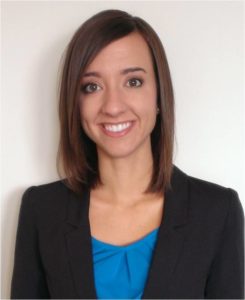Special Interest Groups
SIGs are communities within AAAM with a shared interest in advancing a specific area of knowledge, learning, or technology where members cooperate to affect or produce solutions within their particular field and may communicate, meet, and organize. Special Interest Groups, chartered by the AAAM Board of Directors, allow members with similar professional specialties to exchange ideas and keep themselves informed about current and discrete developments in their fields. The activities of the SIGs carve a diverse path of interests and needs, which are all planned by their Chairs and AAAM members. Through participation in SIGs, members can help design what, in essence, are small professional organizations within the broader national society. The Board will review SIGs annually to determine if there is still a need for the content area and if any new SIGs need to be identified.
Join A Special Interest Group
- Automated Vehicles
- Global Child and Youth Road Safety
- Road Safety in Low- and Middle- Income Countries
- Motorcyclists' Safety
“The continuing evolution of automotive technology aims to deliver even greater safety benefits and Automated Driving Systems (ADS) that – one day – can handle the whole task of driving when we don’t want to or can’t do it ourselves. Fully automated cars and trucks that drive us, instead of us driving them, will become a reality. These self-driving vehicles ultimately will integrate onto roadways by progressing through six levels of driver assistance technology advancements in the coming years.” (Source: NHTSA website). This SIG explores all aspects of autonomous vehicle safety and the implications of ADS for all road users, including non-automated vehicles, pedestrians, and bicyclists.
 |
 |
| Chair: Kristofer Kusano, Ph.D. | Co-Chair: Thomas F. Fugger, MS |
Road traffic injuries are now the leading worldwide killer of people aged 5-29 years, as published by the World Health Organization’s Global status report on road safety 2018. Protecting children vulnerable to road injury, including those under five years of age, is critical today. Equally important and more difficult to define is the age at which a child ceases to be a child. Infancy is easy. Identifying the age of the majority (pre-teen, teen, or even young adult at 21) is more rooted in culture and history. Defining the term “child” with a beginning and end recognizes that interventions and behaviors as children grow from infancy through childhood are an important first step to making appropriate adaptations. As a child ages, guidance at each developmental stage may vary from state to state or country to country. In addition to occupant protection for children in vehicles, road safety must address pedestrian, bicycle, and other (evolving) wheeled “vehicle” safety throughout childhood in preparation for adulthood. Preparing practitioners to meet a country or state where they are and helping them build infrastructure and a culture of safety is evidenced, in part, by multiple factors such as:
- growing a government-supported network of public health and safety professionals,
- adoption of enforceable road safety laws,
- access to affordable, regulated safety equipment,
- use of public information with an emphasis on injury prevention,
- education channels that establish new social norms, and
- support the development of regulations for child restraints in ambulances, optimizing rear seat safety for children, etc.
An example of practitioner guidance could focus on child road safety introduced by employing a Good, Better, Best model to incrementally move a family or country gradually from the non-use of occupant restraints or helmets to one more easily achieved, that of moving children from front to back seats, using a seat belt in back seats until appropriate child restraints can be obtained or using helmets to prevent head trauma.
 |
| Chair: Julie A. Mansfield, PhD, MS |
An estimated 1.25 million people die on the world’s roadways yearly, and many more sustain serious injuries. The United Nations has declared 2011-2020 as the Decade of Action for Road Safety. It also recently established a Sustainable Development Goal (SDG) for road safety for the first time. Low- and middle-income countries are heavily burdened by these injuries and deaths. AAAM is uniquely positioned to address all five pillars of the Decade of Action for Road Safety framework because of its multidisciplinary membership and global reach. This SIG focuses on global strategies to decrease road traffic injuries in low-resource settings.
 |
|
| Chair: Sushant Jagtap, MS | Co Chair: To Be Determined |
Mopeds and motorcycles (Powered-Two-Wheelers or PTW) are becoming increasingly popular in many regions worldwide. In some low- and middle-income countries such as Vietnam, Togo, and Burkina Faso, PTWs account for more than 70% of the national vehicle fleet. The World Health Organization estimates that 28% of motor vehicle-related fatalities worldwide are motorcyclists, accounting for more than 286,000 deaths yearly (WHO, 2017).
E-bikes are another two-wheeler vehicle that is expanding rapidly over the world. E-bikes were introduced in China in the late 1990s to provide a low-cost and (perceived) environmentally friendly alternative to cars. It is estimated that e-bikes grew in China from 40,000 to 170 million in only 16 years. Deaths and injuries related to e-bike crashes have also grown dramatically, increasing five-fold in only four years (2004-2008).
PTW riders are exposed to an increased risk of injury due to the more complex dynamics of the vehicle that are essentially less stable and the lack of a protecting vehicle structure for the occupant, as in the case of passenger cars. The interaction between the vehicle and the road infrastructure is more relevant than in the case of any other vehicle. The shared use of the road between PTWs and other vehicles increases the rider’s risk of injury. All these unique characteristics of PTWs make it almost impossible to translate safety systems that are effective in passenger cars to motorcycles and mopeds.
As the number of PTWs grows globally, organizations like WHO are struggling to implement adequate safety measures that can contain the more than likely growth in associated fatalities and injuries. The creation of a Special Interest Group within AAAM can be a vehicle to channel multidisciplinary research focusing on the safety of motorcyclists.
It is difficult to identify an academic/research forum that could be a reference for motorcyclists’ safety. The Motorcyclists Safety SIG in AAAM is in that place. In parallel, this SIG attracts professionals worldwide to participate in the SIG and the conference.
 |
| Chair: Tyler Shaw, MSBE |
How SIGs Function
Membership: Only AAAM members can belong to SIGs, though each member can belong to as many SIGs as desired. Members can join SIGs by going to the membership section of AAAM’s website.
Leadership: Each SIG will be led by a Chair and a Co-Chair. The first Chair and Co-Chair will be identified through a Call for Volunteers process (appointed by the President and approved by the Board of Directors). Chair and Co-Chair will serve in the role for three years. A Call for Volunteers can be disseminated for future Chairs, or the Co-Chair may select the upcoming Co-Chair when they move into the Chair position. The term is three years.
Leadership Responsibilities: The Chair and Co-Chair will plan and execute four meetings per year. It is entirely up to the leaders to find a speaker or panel, prepare the program, and submit the agenda, materials, and presentation to the AAAM office in advance. With the help of SIG members, Chairs are to define annual SIG objectives. The chair will provide a report that includes a summary of activities, meetings, and participation. This report will be shared with the Board and membership of AAAM. Staff will support all logistics, internal marketing, and promotion and assist with orientation and onboarding for new Chairs. Critical components to SIGs are sharing best practices, ideas, networking, and an education component.
SIG Meetings & Communication (Minimum Requirement)
- (4) Meetings per year by conference call
- In-person meeting at Annual Conference, with conference call set up for virtual attendees
- Communication between meetings (options):
- LinkedIn Group for each SIG
